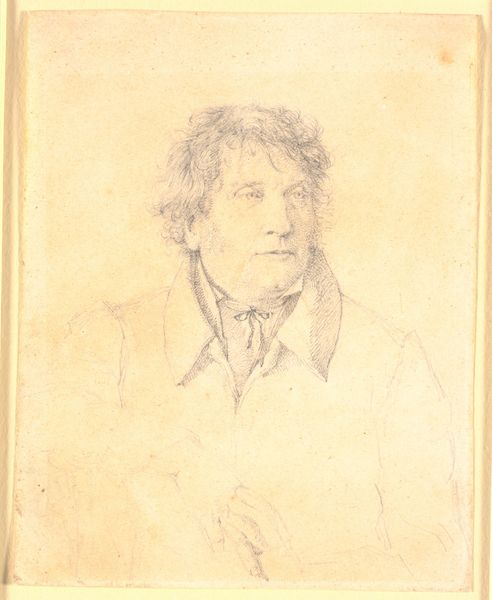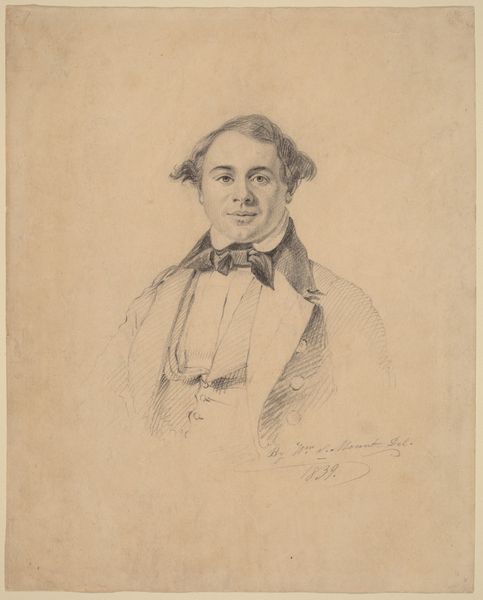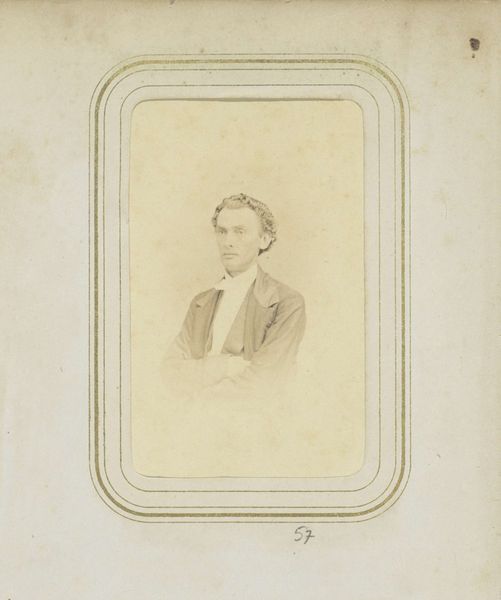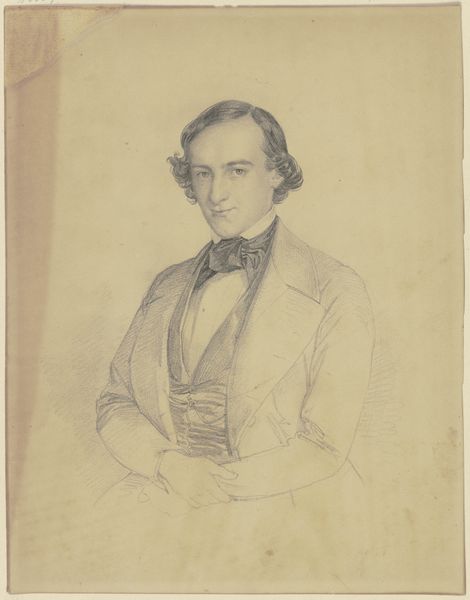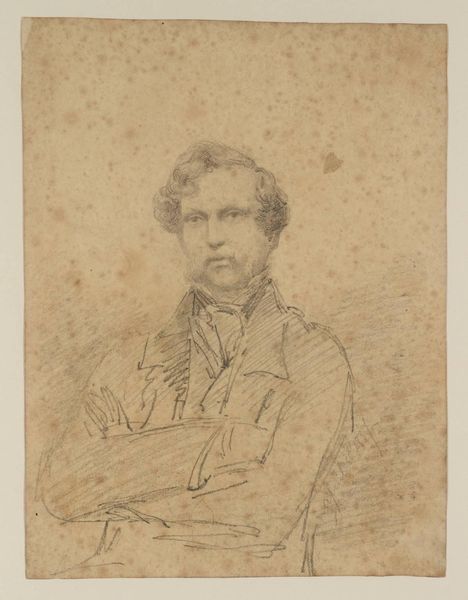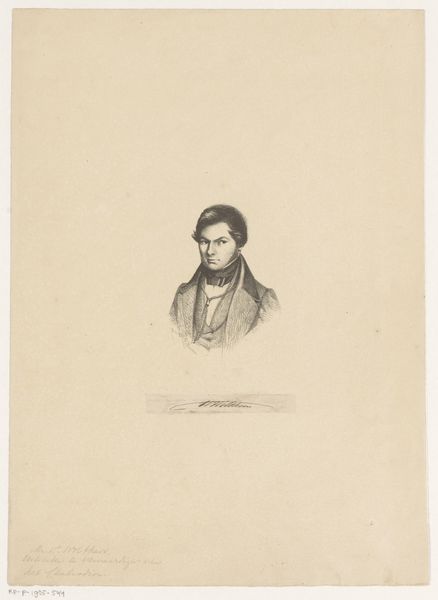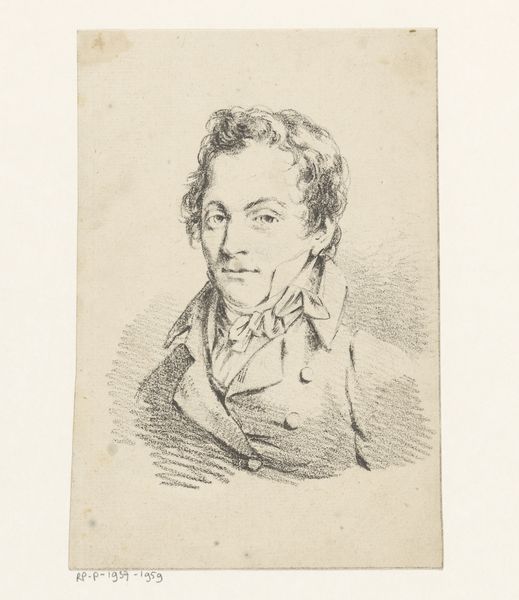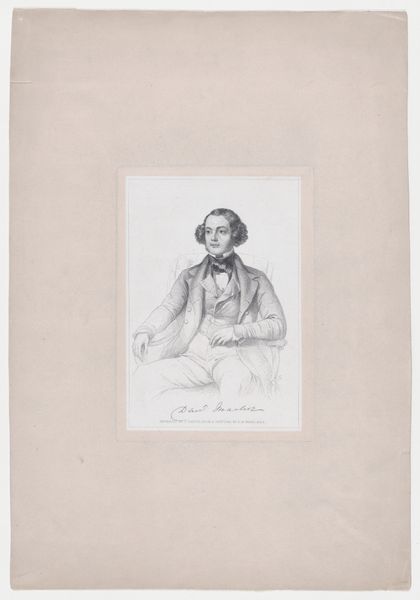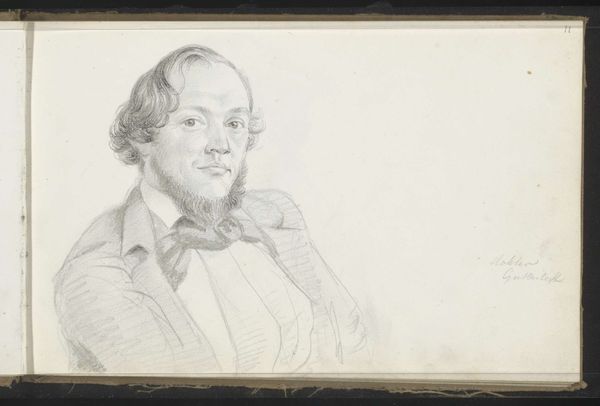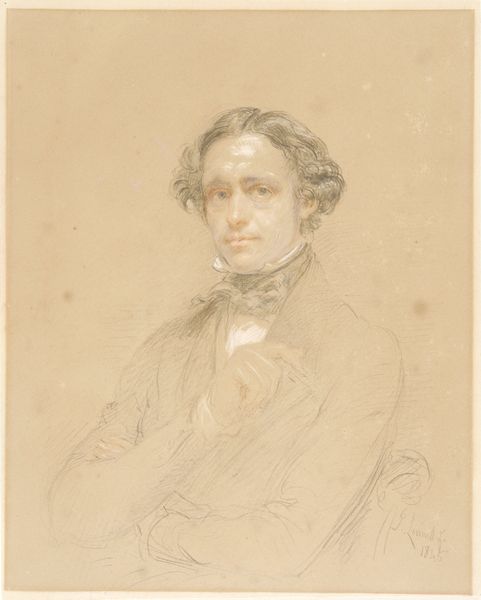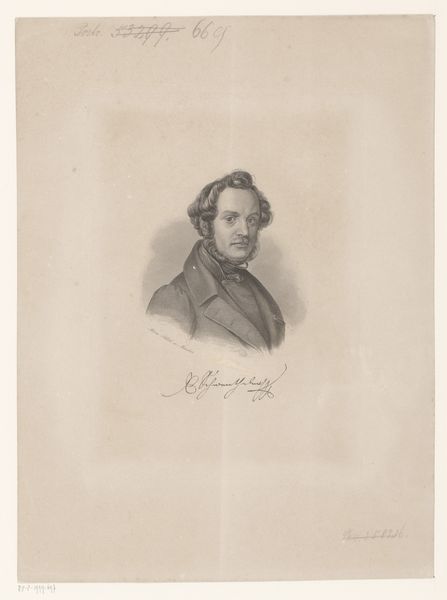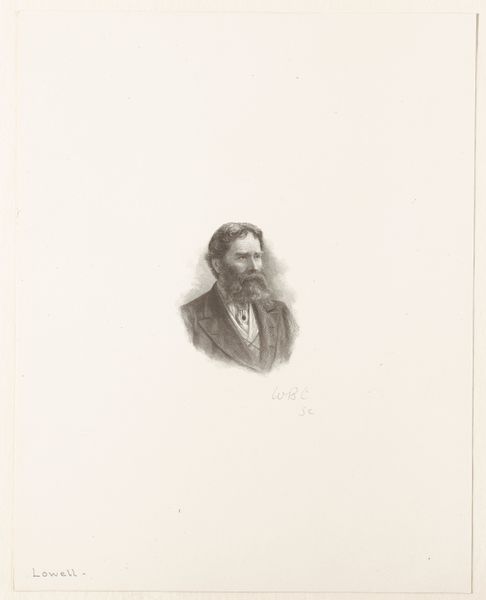
drawing, chalk
#
portrait
#
drawing
#
romanticism
#
chalk
Copyright: Public Domain
Editor: This is a self-portrait, “Selbstbildnis im Mantel, Kniestück,” by Richard Parkes Bonington. It’s a chalk drawing. I’m struck by the understated elegance of it. What can you tell us about this piece? Curator: Bonington’s self-portrait gives us a fascinating insight into the image of the artist in the early 19th century. This wasn't just a likeness; it was a construction of identity. What statement do you think Bonington is trying to make about himself? Editor: He seems… refined, maybe a bit melancholic? It's definitely a carefully composed image. Curator: Exactly. Think about the social and cultural context. Romanticism valued individuality, emotion, and even a bit of suffering. The loose strokes of the chalk emphasize immediacy, but the careful posing and clothing present a specific public persona. Consider how this contrasts with the preceding era's emphasis on rigid academic portraiture celebrating aristocracy and power. How do you think access to imagery at that time affects its presentation? Editor: I suppose images were rarer and more precious, so artists had more power in controlling their presentation to the public. Curator: Precisely! This control over self-representation was a key aspect of artistic autonomy during that time, influenced by larger social and political changes following the French Revolution. Art became less about patronage and more about public perception. This shift impacted not just the subject matter, but how art itself was consumed and interpreted. Editor: So, this portrait isn't just about Bonington's face, but about his role as an artist in a changing world. Curator: Precisely! It reveals how artists actively shaped their public image in a developing cultural landscape. Editor: That gives me a whole new perspective on self-portraits! Curator: Indeed. These images offer valuable snapshots into the historical relationship between art, the artist, and broader societal shifts.
Comments
No comments
Be the first to comment and join the conversation on the ultimate creative platform.
